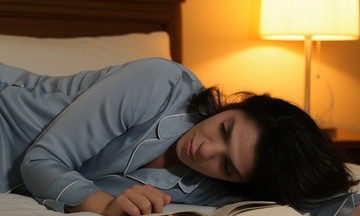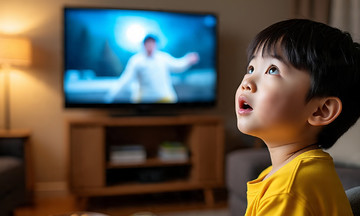Dr. Dinh Trung Nghia, deputy director of the High-Tech Eye Center at Tam Anh General Hospital in TP HCM, diagnosed Minh's right eye with 2/10 vision. Her left eye had long-term myopia of 2 diopters, but with glasses, her vision reached 9/10, so no intervention was needed yet.
Cataracts are common among older adults. This occurs when the eye's lens gradually loses its transparency due to aging, causing reduced vision. The condition can be treated with surgery, leading to good vision recovery.
 |
Minh undergoes pre-operative screening. Photo: Tam Anh General Hospital |
Minh has several underlying health conditions, including hypertension, dyslipidemia, hyperuricemia, and arrhythmia. Thorough pre-operative checkups and screenings were necessary. Dr. Nghia examined her eyes and performed corneal biometry to determine critical parameters such as axial length, corneal curvature, and thickness to select the right type of intraocular lens. She then underwent optical coherence tomography (OCT), corneal topography, and intraocular pressure measurements to detect potential risks like glaucoma. Blood tests and blood glucose checks were also conducted to screen for diabetes and other underlying conditions before surgery.
The surgeon performed phacoemulsification cataract surgery, using ultrasound waves to break down and remove the clouded lens, replacing it with an artificial lens to restore vision. A week later, Minh's right eye regained clear vision, achieving 9/10.
 |
The doctor performs phacoemulsification surgery to replace the natural lens in Minh's right eye with an artificial lens. Photo: Tam Anh General Hospital |
Phacoemulsification uses a small incision that heals naturally, minimizing trauma to surrounding eye tissue, reducing post-operative astigmatism, and lowering the risk of complications.
Dr. Nghia explained that the accuracy of refractive correction with phacoemulsification is not as precise as specialized laser surgery for myopia. However, most patients achieve good post-operative results, regaining optimal vision without glasses. Recovery time depends on individual health. Typically, the eye fully heals in 3-4 weeks, with mild discomfort or irritation possible in the initial days.
During the first month after surgery, patients should avoid exposing their eyes to wind, dust, smoke, and water, and limit strenuous activity. Those working in hazardous environments should wear protective glasses to prevent infections. Limited use of phones, television, and computers is acceptable, but overuse should be avoided. No dietary restrictions are necessary unless the patient has underlying health conditions. After one month, normal activities can resume.
Minh Huong
*The patient's name has been changed.
| Readers can submit questions about eye diseases here for doctors to answer. |












